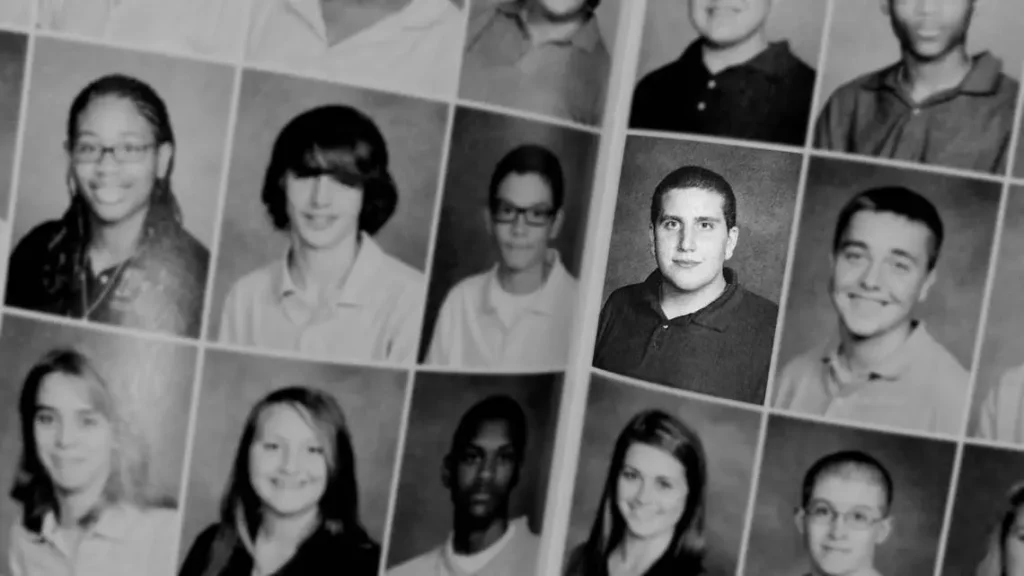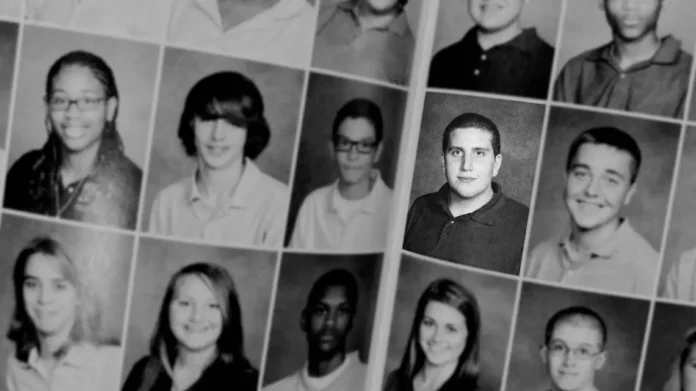The man, Bryan Kohberger accused in the stabbing murders of four University of Idaho students suffered from a rare neurological disease known as vision snow syndrome throughout his adolescence and adulthood.
Table of Contents
“He’d speak about it all the time,” Thomas Arntz, a former high school classmate of Koberger’s, told the Idaho Statesman over the phone. “The term that comes to me is that he was obsessed with it and spoke about it nonstop. I’m sure that irritated him to no end.”
Many individuals following the case had never heard of the disease until learning about it via Bryan Kohberger. Even specialists agree they have a lot to learn.
Kohberger, a 28-year-old Pennsylvania native studying criminal justice and criminology at Washington State University, has been charged with four charges of felony first-degree murder and one count of felony burglary in connection with the Nov. 13 deaths at a Moscow property.
Seniors Madison Mogen, 21, of Coeur d’Alene, and Kaylee Goncalves, 21, of Rathdrum were killed in the assault, as were junior Xana Kernodle, 20, of Post Falls, and freshman Ethan Chapin, 20, of Mount Vernon, Washington.
WHAT EXACTLY IS VISUAL SNOW?
Vision snow syndrome is a relatively new illness that is thought to have first been documented in 1995. It wasn’t given a formal name until a 2015 research.
Visual snow sufferers describe seeing little, moving dots across their eyesight. Those who grew up before the era of smart Televisions should have a good idea of what it looks like: Visual snow is analogous to seeing the world through a hazy, static-filled television set.
“They have a broken TV box in front of their eyes,” Lars Michels, a Swiss researcher working on some of the syndrome’s most recent investigations, told the Statesman over the phone.
Snowy vision episodes often last a minute but might linger for hours, according to Michels.
Other visual abnormalities are also reported. It might seem to be pouring when it is not, or to have 12 moving automobiles when there is only one.
Almost half of the patients say that visual snow is accompanied by headaches and tinnitus, both of which may be severe. According to the Mayo Clinic, migraines may be severe enough to prohibit patients from doing regular tasks, while tinnitus can make focus and hearing difficulties.
According to the Mayo Clinic, visual snow may affect up to 2% of the population, although not enough study has been conducted to determine its exact prevalence. According to Michels, visual snow is often misinterpreted as either migraines or a visual issue. The link between the two is not usually made.
A 2020 research indicated that visual snow patients had an average age of 29 and that symptoms started early in life. In contrast to migraines, which affect women two to three times more than men, the condition affects both men and women equally.
DOCUMENTED SUSPECT CONDITION
According to online archives, Kohberger used the internet to discuss his experiences with the disease. Between 2009 and 2012, a person who looked to be Kohberger commented about visual snow on Tapatalk, an internet forum.
The New York Times, which broke the story first, reported that the user name matched an email address belonging to Kohberger, that references to his birthday corresponded to his known birth date, and that his claimed location of Effort, Pennsylvania, corresponded to Kohberger’s birthplace. Kohberger appears in a picture on the account.
Exarr.thosewithvisualsnow, the user, reported that he got the condition on September 21, 2009. Kohberger was about 15 years old at the time. The user said that he has changed since then, “mostly due to worry and a feeling of derealization and pessimism.” He regularly wrote about how difficult it was to retrieve memories.
“I’ve been sad ever since,” he wrote in 2010. (Quotations from his postings in this tale are provided just as he wrote them, with no editing to adhere to standard capitalization and punctuation.) “I have no recollection of anything. And I’m constantly under a terrible strain in my brain.
My attention is never off visual snow, and I often wonder what a normal person would be doing while I suffer.
This entire situation has driven me insane; I feel like my life is meaningless since other people can remember wonderful moments with their parents or childhood memories, but I won’t be able to.”
DEPERSONALIZATION FEELINGS
The Tapatalk user mentioned feeling disconnected from life, comparing it to a computer game. He was “somewhat into” the game at moments, but it seemed “pointless and full of nothing” at others.
“I have had this dreadful Depersonalization going on in my life for about 2 years,” claimed one 2011 post. “I often find myself engaging in ordinary human relationships, but it’s as if I’m in a role-playing game.”
Seeing family members’ expressions was like “looking at a computer game, but less.” “As my family embraces and celebrates, I am caught in this nothingness of emptiness, experiencing utterly no emotion, feeling nothing,” the message added. “I feel unclean, like there is dirt inside of my brain, my thoughts, I am constantly dizzy and bewildered. “I have no sense of self-worth.”
According to Michels, depersonalization or the sensation of being in a video game is prevalent. Our brain knows it is in a steady environment when we have reliable eyesight. When apparently random sounds and visual disruptions appear on a regular basis, it may make a person feel as though their surroundings are less based in reality.
Living with a sickness for which there is no remedy, according to Michels, might have a negative impact on one’s mental health. Mild to severe sadness, tiredness, and sleeplessness are common symptoms of the condition.
A 2021 research that assessed 125 visual snow patients revealed that “patients indicated high rates of anxiety and sadness, depersonalization, exhaustion, and poor sleep, which greatly reduced quality of life. Moreover, psychological disorders, notably depersonalization, were linked to worsening visual symptoms.”
But Michels isn’t aware of a relationship between visual snow and violence, and he does not feel people should perceive a link between Kohberger’s condition and his potential to carry out an assault.
SEARCHING FOR A CURE
In 2011, a Tapatalk user claimed to have developed a cure for visual snow. He claimed that visual snow condition was caused by poisons found in the improper foods.
“WHEN SOMETHING SHOULDN’T BE HAPPENING IN YOUR BRAIN, CHEMICALS SHOULDN’T BE RELEASED,” the message said. “THESE CHEMICALS ARE RELEASED BECAUSE OUR BODY DOESN’T WANT TOXINS, IT’S GOING HAYWIRE.”
He linked to a website called Know the Cause, which claims that fungus and yeast are to blame for numerous diseases. The user said that he intended to attempt the diet on the internet to treat his condition.
The Kaufmann Diet urges individuals to avoid a wide range of foods, including sugar, wheat, maize, peanuts, soy, alcohol, and animals given these things before slaughter.
“The fact is that there is no test for our poisons; we just need to get rid of them,” the user added. Arntz recalled Kohberger attempting to heal his visual snow with a diet.
“Carbohydrates were a major no-no, and you had to avoid bread and sweets,” Arntz told the Statesman.
“Therefore he usually ate slices of ham and omelets.” Several individuals remembered Kohberger’s significant weight reduction in high school.
He became hyper-focused on what he ate, according to his pals, to the point that he developed an eating problem that necessitated hospitalization, according to Jack Baylis, 28, another former buddy. Arntz believed that Kohberger weighed more than 300 pounds before losing up to half his body weight.
Arntz speculated that Kohberger’s desire to reduce weight may have coincided with his attempt to heal his visual snow.
“Bryan embarked on this diet in the expectation that his symptoms might improve. But it’s such a stringent diet that he’d give in and try something else,” Arntz said.
On February 19, 2012, the user’s last Tapatalk message was captioned “Coming to terms with the VS?”
“I have now embraced my visual snow,” he wrote. “I no longer feel the urge to avoid the forum; it no longer frightens me!” Has anybody else reached a conclusion? Coming to terms, on the other hand, seems like it may be a terrible thing.”

WHAT THE SCIENCE SAYS
Visual snow syndrome is yet unknown to experts, and there is no recognized remedy. It affects people for the rest of their life.
But, as more study is performed, indications concerning its origins are appearing.
According to research, visual snow is caused by something going wrong with the visual-processing area in the cerebral cortex of the brain, leading it to overload and process sights improperly.
“These folks undoubtedly have too much gasoline in their tanks, and their brains can’t handle it because they’re overwhelmed with knowledge,” Michels said.
Overloading the brain compels it to work harder, and, similar to how muscles expand with increasing exercise, the additional activity generates extra brain growth.
Michels’ study involves evaluating photos of visual snow sufferers’ brains. Researchers can observe that a portion of their brains has grown abnormally, leading them to believe that this aberrant development is associated to visual snow symptoms.
“When there is too much traffic in the brain and too much information irritating a certain region of the brain all the time,” Michels said. “It’s known as maladaptive plasticity.”
- Tribute planned to remember four Idaho students on the anniversary of their deaths
- Bryan Kohberger’s $10K Prison Cash: Victims Get $0?
- The video leaker from Kohberger jail has been discovered, but he will not face criminal charges.
- Kohberger, Idaho college murderer, addresses the relatives of his victims as he is sentenced for 4 brutal murders
- Idaho Murder Motive Mystery: Still Unknown After Gag Order Lifted
- Police Break Silence After Gag Order Lifted in Idaho Murders — Chilling Details About Kohberger Emerge
- Who is Morgan Riddle? A Wimbledon fashion influencer who watches matches with boyfriend Taylor Fritz.
- Kamala Harris Congratulates Donald Trump on Presidential Election Win
- Raiders Fire Luke Getsy: Offensive Coordinator Axed After 2-7 Start
